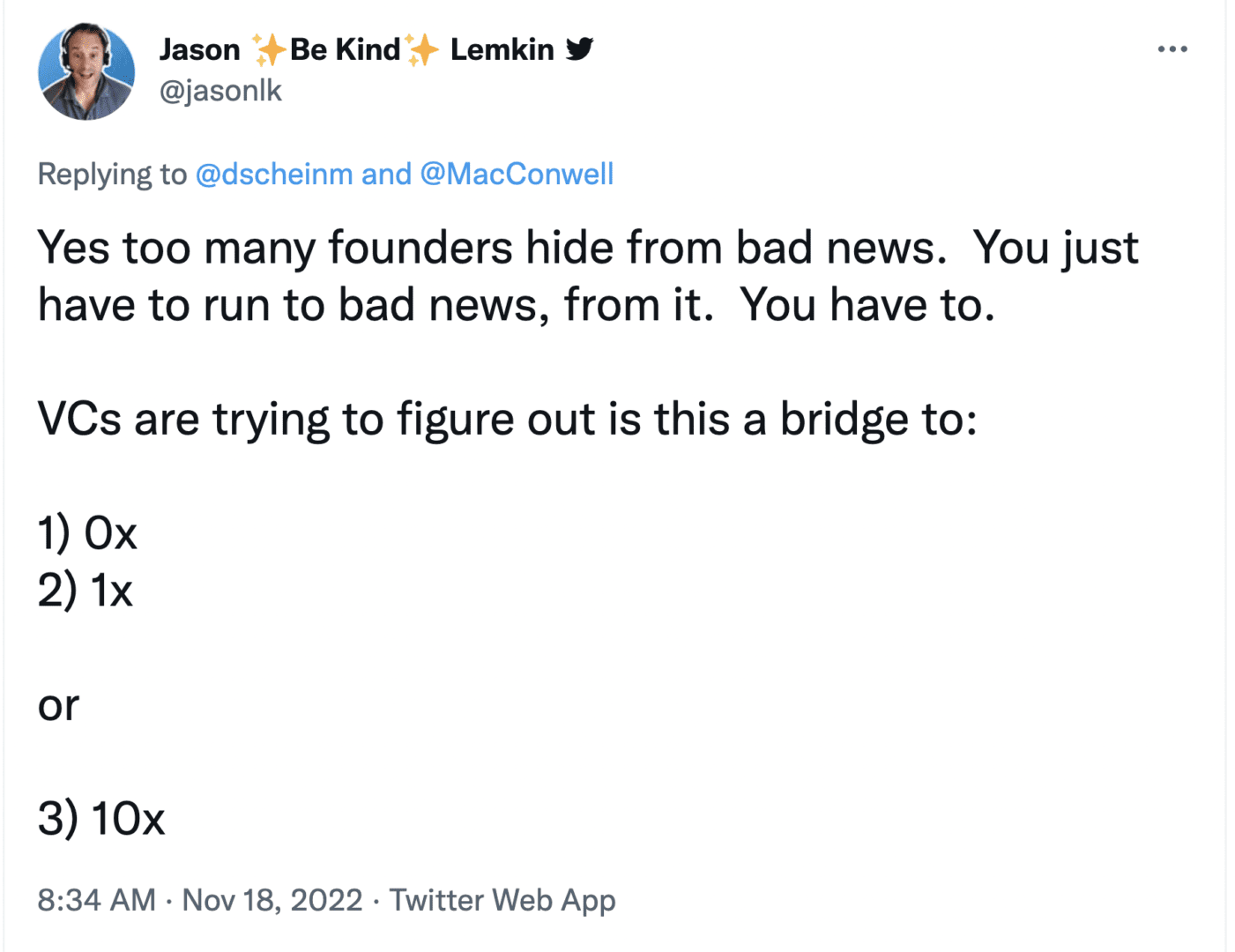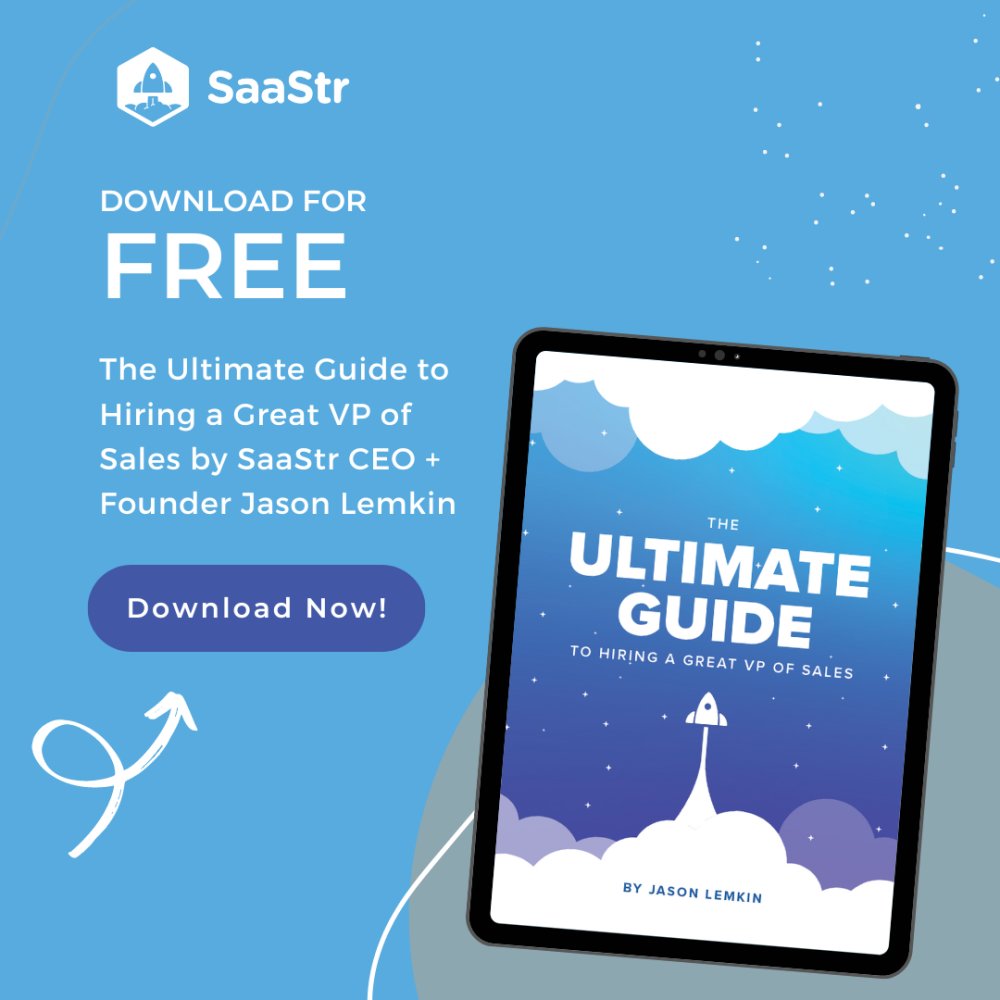So there’s a lot of angst in VC today. And a lot of it is around bridge rounds. What’s a bridge round? It’s extra money solely from the existing investors. And bridge rounds are … stressful. Almost always. No one really wants to do them. They want a top VC to come in and do the next round at 2x, 3x, 10x the last round price. Not the existing investors having to reach deep into their own pockets.
Now here’s the confusing thing, that founders don’t understand as well as they should. Every bigger VC fund carries “reserves”. Extra money used for second checks and third checks. With bigger funds, it’s often 50% or more of the fund.
But those reserves aren’t unlimited, and they run out. And most aren’t used for bridge rounds. Most VC reserves are used for uprounds, led by new investors. So bridge rounds are stressful. They come out of a real but limited pool of capital that really only wants to be deployed into the winners. Not the ones struggling.
And yet, VCs know even the best portfolio companies often have a rough patch. I needed a bridge myself, and every Unicorn I’ve invested in has had a year of hell. Several needed a bridge, and one didn’t get one and really struggled without. So VCs know sometimes you just have to bridge to support your potential winners.
Ok, so let’s break down what happens in practice. There really are 3 types of bridge rounds:
“The 0x Bridge”. These are just too common. The biggest sign is when the founders end up with just a few weeks of cash left, and no plan. I’ve never seen this play out to any sort of win. When the founders hide from running out of money, and push the existing investors to put more money in at the last minute, well, sometimes they get it. But I always see them spend it all, and end up in the same place in just a few months. VCs call this a “Bridge to Nowhere”. I’ve done one of these, and lost all my money. I won’t do another.
I’ve made exactly $0 on those investments
— Jason ✨Be Kind✨ Lemkin 🇮🇱 (@jasonlk) November 18, 2022
“The 1x Bridge”. Now here is where different VCs have different perspectives. There are deals where realistically, the startup will likely never be a huge success. The most common sign is that growth has been slow for well over a year. A few rough quarters, everyone expects that. But once growth slows consistently to under 50%, for more than a year … startups basically never bounce back to hyper growth. Startups are flywheels and momentum engines. But that doesn’t mean these ones will fail. A $10m business growing 20% is still a very real business. Just not one likely ever to be worth $1B. So VCs are often faced with a choice here. If a lot of money has already gone in, does it make sense to invest, say, another 20% of the initial investment if it dramatically increases the odds you at least get your money back? I call these “1x Bridge” deals. They increase the odds a VC gets their money back, maybe with a modest return. But that’s about it. These bridges also let VCs kick the can down the road on a potential write-off — if the bridge lasts a long time. So these deals actually are fairly common if the VCs have the reserves to do them, and the founders don’t act too crazy or pushy. The best VCs are fine losing 1x their money on any single deal. But a lot of VCs don’t want to. If a small second check helps avoid a write-off, it can be worth it, at least in theory, So as a founder, you need to know if you can leverage this situation.
“The 10x Bridge”. We saw a lot of these when Covid hit — the shutdown just swamped some top-tier businesses. AirBnb needed one, TripActions needed one, etc. Even category winners sometimes need them. When a true winner somehow gets hit hard. You still know it’s a 10x-100x deal, it just needs to get over a hump. These aren’t easy to bridge, but they … tend to get done. And the key here is the founders are always transparent and clear on why it is, and still will be, a winner. They get it. These bridges are what VCs reserve for. We’ve all done a few of these checks into massive outcomes. This also happens sometimes when a top portfolio company goes through a big transition, say from SMB to Enterprise. Or expanding its TAM. Sometimes, there’s just a rough patch, but you know it’s a 10x deal. You bridge those. That’s the job.
So at the end of the day, as founders, your job is Not To Run Out of Money. It really is one of the Top 3 jobs.
But if you are going to run out:
- First, always communicate your Zero Cash Date in every investor update, every month, promptly. That way there are no surprises. That way, your investors are already sort of planning for a bridge potentially.
- Second, run toward Bad News. Not from it. The best founders aren’t overly dramatic; they remain realistically positive. But they are clear if the cash reach isn’t going to be enough. And they always have a plan. A real plan, that makes sense. That isn’t delusional. And they share it early. When they have 6-8+ months of runway left.
- Third, do not present a Delusional Plan. Too many non-controller types build plans that look pretty but are delusional. What I see most often is making it all up in Q4. 5% growth, 5% growth, 5% growth, then 178% growth in Q4. Looks great! But impossible.
- Fourth, do not present a We’ll Spend Our Way Out of a Hole Plan. I see this too often in high-burn-rate startups. The answer to a rough patch? Spend even more! That way we can raise a big round. Looks good on a spreadsheet. But in practice, the money is just gone faster, and the faster growth never comes, or doesn’t really impact fundraising.
- Fifth, ask — and ask early. Talk quietly to each of your top investors and ask them if they want to put more money in — and if they can.
The bottom line is a real plan, maximum transparency, and taking early action helps increase the odds it’s not seen as a 0x Bridge. Talking about it for real after some good news helps increase the odds it’s a 10x Bridge. And at least running toward Bad News tends to ensure it’s seen as a 1x Bridge, not 0x.
These days, you usually need a catalyst among your existing investors to get a new round going
Who will yours be? Are you sure?
More with @HarryStebbings + me here -> https://t.co/VGOtKAtnCO pic.twitter.com/woiepq1h3r
— Jason ✨Be Kind✨ Lemkin 🇮🇱 (@jasonlk) January 19, 2024
More on bridge rounds here:
(almost gone image from here)



